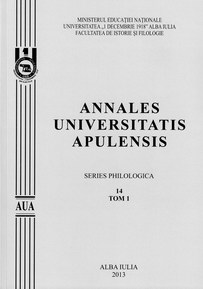Tipare europene în contextul culturii populare române. Sfârşit de secol XIX – început de secol XX
European Patterns within the Context of Romanian Folk Culture. The end of the 19th century – the beginning of the 20th century
Author(s): Alina AndreicaSubject(s): Literary Texts
Published by: Universitatea »1 Decembrie 1918« Alba Iulia
Keywords: folk culture; national identity; cultural policies; cultural institutes; artistic creation; European pattern
Summary/Abstract: Culture is an information repository, shaped by history, subject to a number of recurrences with identity purpose. Folk culture as artistic and institutional manifestation is an essential element of identity checklist. References to it in the Danubian-Pontic area, during the troubled period before / after the Great Unification, came within an ideology-type framework. Because of a population mainly illiterate living in rural areas, there has been established an almost complete synonymy between folk culture and peasant culture. The Romanian peasant became a national figure par excellence. Folk productions present in the created institutions (the Museum of Romanian language (Cluj-Napoca), the Ethnographic Museum of Transylvania / the Museum of the Romanian Peasant - Bucharest, folklore archives of the Romanian Academy, the branch of Cluj-Napoca / Folklore Archives of the Society of Romanian Composers of Bucharest etc. ) is an integral part of European cultural policies. At the literary level Herder’s creation, Ossian epic poems, Grimm’s fairy tales are just a few patterns applied to Romanian area. Therefore artistic creations, the institutions that were set up are constructs shaped historically, permissive to ideology-type interventions.
Journal: Annales Universitatis Apulensis. Series Philologica
- Issue Year: 14/2013
- Issue No: 1
- Page Range: 45-54
- Page Count: 10
- Language: Romanian

